With the introduction of custom keyboards in iOS, this problem becomes a tad more complex.
In short, the UIKeyboardWillShowNotification can get called multiple times by custom keyboard implementations:
- When the Apple system keyboard is opened (in portrait)
- UIKeyboardWillShowNotification is sent with a keyboard height of 224
- When the Swype keyboard is opened (in portrait):
- UIKeyboardWillShowNotification is sent with a keyboard height of 0
- UIKeyboardWillShowNotification is sent with a keyboard height of 216
- UIKeyboardWillShowNotification is sent with a keyboard height of 256
- When the SwiftKey keyboard is opened (in portrait):
- UIKeyboardWillShowNotification is sent with a keyboard height of 0
- UIKeyboardWillShowNotification is sent with a keyboard height of 216
- UIKeyboardWillShowNotification is sent with a keyboard height of 259
In order to handle these scenarios properly in one code-line, you need to:
Register observers against the UIKeyboardWillShowNotification and UIKeyboardWillHideNotification notifications:
[[NSNotificationCenter defaultCenter] addObserver:self
selector:@selector(keyboardWillShow:)
name:UIKeyboardWillShowNotification
object:nil];
[[NSNotificationCenter defaultCenter] addObserver:self
selector:@selector(keyboardWillHide:)
name:UIKeyboardWillHideNotification
object:nil];
Create a global variable to track the current keyboard height:
CGFloat _currentKeyboardHeight = 0.0f;
Implement keyboardWillShow to react to the current change in keyboard height:
- (void)keyboardWillShow:(NSNotification*)notification {
NSDictionary *info = [notification userInfo];
CGSize kbSize = [[info objectForKey:UIKeyboardFrameEndUserInfoKey] CGRectValue].size;
CGFloat deltaHeight = kbSize.height - _currentKeyboardHeight;
// Write code to adjust views accordingly using deltaHeight
_currentKeyboardHeight = kbSize.height;
}
NOTE: You may wish to animate the offsetting of views. The info dictionary contains a value keyed by UIKeyboardAnimationDurationUserInfoKey. This value can be used to animate your changes at the same speed as the keyboard being displayed.
Implement keyboardWillHide to the reset _currentKeyboardHeight and react to the keyboard being dismissed:
- (void)keyboardWillHide:(NSNotification*)notification {
NSDictionary *info = [notification userInfo];
CGSize kbSize = [[info objectForKey:UIKeyboardFrameEndUserInfoKey] CGRectValue].size;
// Write code to adjust views accordingly using kbSize.height
_currentKeyboardHeight = 0.0f;
}
